On June 30, 2025, an art therapy session titled “A Journey in Colour” (Emotional Landscape) took place in the inner courtyard of Poltava Polytechnic – Open Space. The session was designed to provide emotional support to individuals affected by the war in Ukraine, offering them a space to explore and express their inner emotional states through the creation of visual “landscapes” of emotion.
The landscape as a metaphor is a potent art therapy tool, as it can reflect a wide range of emotional states – from stormy turmoil to peaceful harbours, from desolate deserts to blooming gardens. Colour, in turn, is a universal language of emotion, enabling the expression of that which is sometimes difficult to articulate with words.
The use of paint, primarily watercolour, encouraged a free and fluid expression of emotions – an approach often more effective for individuals who have experienced trauma than defined lines or rigid forms.
During the session, each participant was invited to close their eyes, take a deep breath, and imagine their emotional state as a landscape. There were no expectations of realism or beauty – only a sincere immersion into oneself. The goal was to allow emotions to flow freely onto the paper through colour, shape, line, and texture. Participants could create an abstract composition where diffused colour patches conveyed a mood, or a more figurative landscape – featuring mountains, seas, trees, or roads – symbolising their emotional terrain.
This practice held deep therapeutic value. Above all, it enabled the release of unspoken emotions that had accumulated inside. Thanks to the safe and non-verbal format, participants could transform inner chaos or suppression into a visual image – something that could be seen, explored, and gradually processed. The drawing became a kind of mirror of the soul, reflecting what could not be easily put into words.
Once emotions had taken form on paper, they became externalised – something that could be viewed from the outside. This distance helped participants gain a better understanding of themselves without becoming overwhelmed by their experiences. It was as though they were reclaiming control over their emotional state, rather than being consumed by it.
Another essential element of the practice was the search for inner resources. Even in dark or gloomy emotional landscapes, participants often found moments of brightness – a sunbeam, a flower, a patch of light. These elements symbolised hope, strength, and inner resilience. The ability to add bright elements or shift the colour scheme suggested the possibility of internal transformation, the acceptance of change, and a desire for renewal.
The creation of a coherent emotional landscape from fragmented sensations became a decisive step toward inner healing. This process was not just an artistic exercise but a metaphorical act of gathering oneself from within. Each line, brushstroke, and chosen colour became a tool with which participants sought to visualise their feelings, giving them shape, meaning, and space to exist. This visualisation helped foster a sense of harmony and coherence, as though scattered emotional fragments gradually came together to form a complete image of the self.
The practice began with deep self-immersion. Participants were asked to close their eyes, focus on their breath, and allow their thoughts and feelings to flow freely. In this calm internal space, they imagined their emotional state as a landscape, not to make it beautiful or technically precise, but to truthfully and honestly express their inner world. Afterwards, they chose colours intuitively, guided not by logic, but by what felt closest to their current state.
While painting, each participant created a personal “emotional landscape”. For some, these were abstract watercolour blends that represented emotional states – tension, lightness, calm, or anxiety. Others depicted more figurative landscapes: dark forests to represent fear and confusion, stormy seas to symbolise anger and worry, and empty fields to describe loneliness and emotional emptiness. These images gave space for emotions that had been waiting to be acknowledged and expressed.
Once the drawings were complete, it was time for reflection and awareness. The moderators invited participants to observe their work from a distance, with curiosity and without judgment. They posed open-ended questions: “What emotions does this landscape evoke for you?”, “What do you see in it?”, “Is there light or hope in it?”, “Is there something you would like to change or add?”. For many, this became a moment of personal discovery. Some participants wished to add bright details – a sun, a beam of light, flowers – symbols of their desire for positive change and hope for the future.
The final part of the session was a group reflection circle, where participants, if they wished, shared their works, impressions, and thoughts. The exchange was incredibly profound. Some realised their feelings for the first time, others saw that their experiences were not unique or isolated. The atmosphere of sincerity, acceptance, and support strengthened the sense of community. The drawings became a language of the heart, uniting the group and creating a space for understanding and mutual support.
Thus, “A Journey in Colour” became a gentle yet powerful experience, both personal and collective. It served as a reminder that even within the darkest inner landscapes, there is always room for light.
The art therapy practice, “A Journey in Colour”, proved to be a highly effective tool for providing psychological support to participants. It enabled them to deeply understand and express complex and often repressed emotions related to trauma and loss, in a safe, non-verbal format. Participants rediscovered themselves as creators of their inner world, which helped restore a sense of control and agency that is often lost during traumatic experiences. They were able to identify inner resources and points of support, even in difficult emotional states, by symbolically adding elements of hope and light to their landscapes. The practice also reinforced the sense of community and mutual support through open sharing and the realisation that others feel similar emotions. Finally, it helped participants develop emotional self-regulation skills by learning to “read” their emotional states through visualisation and, if desired, transform them.

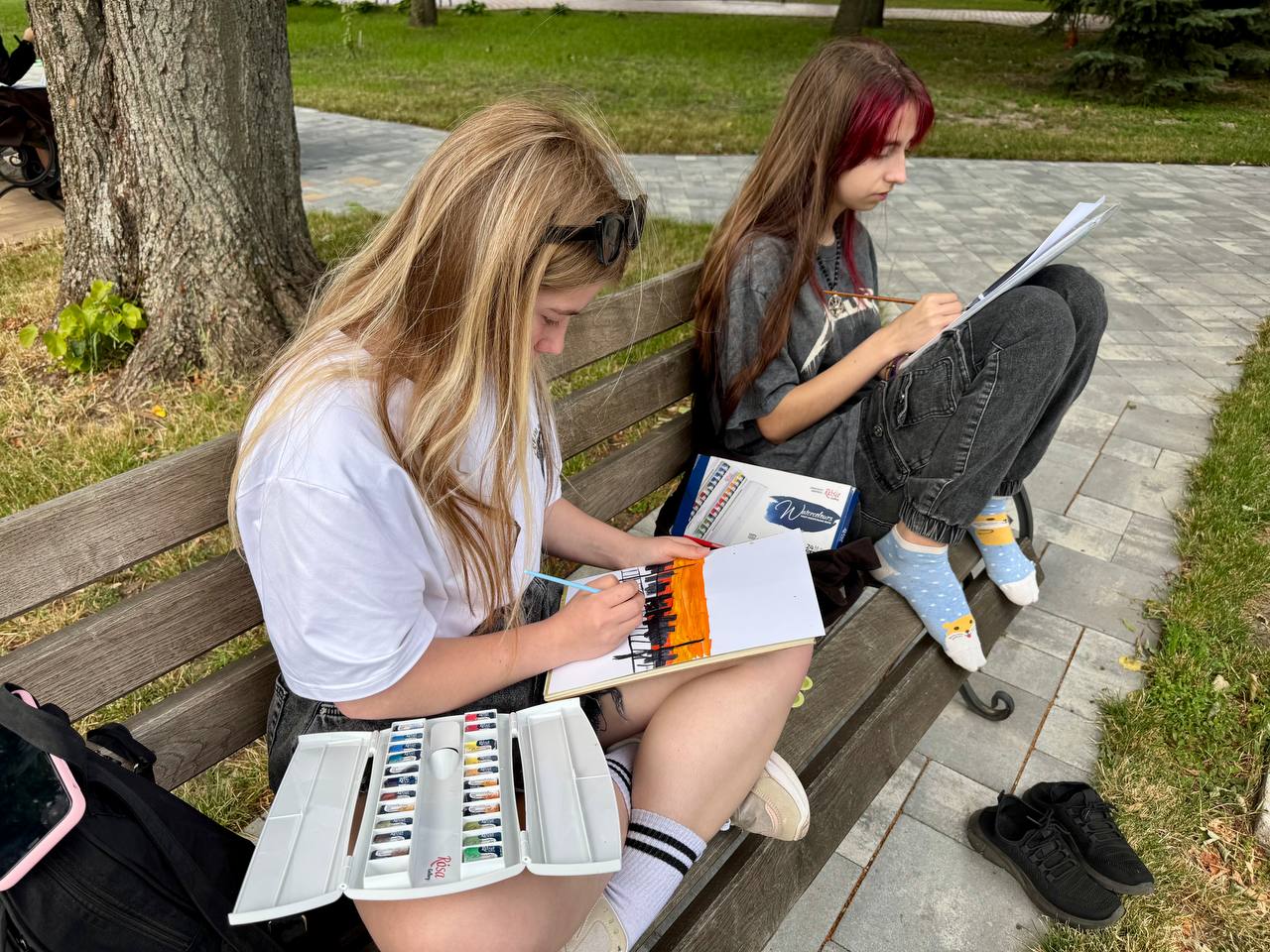
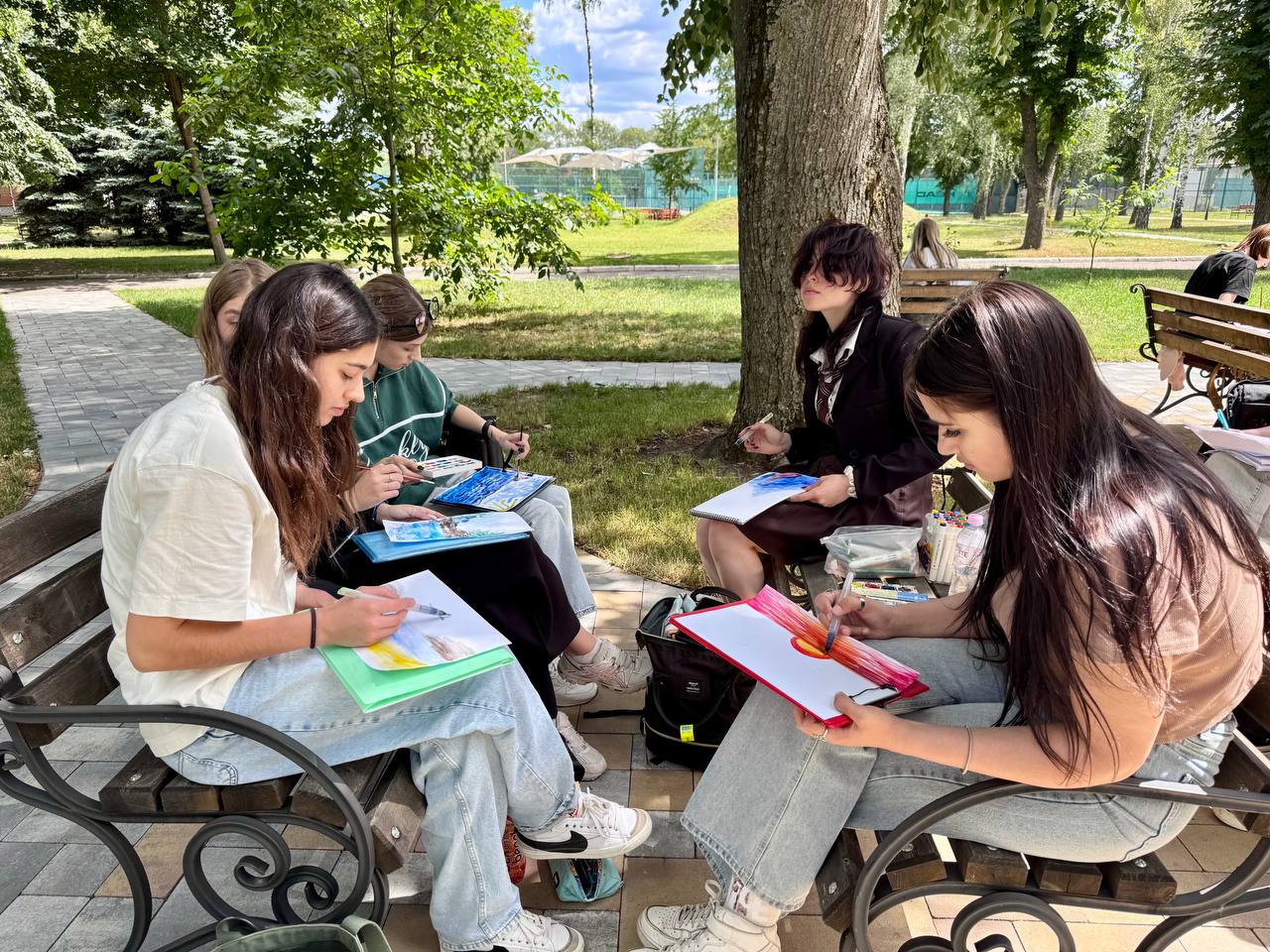
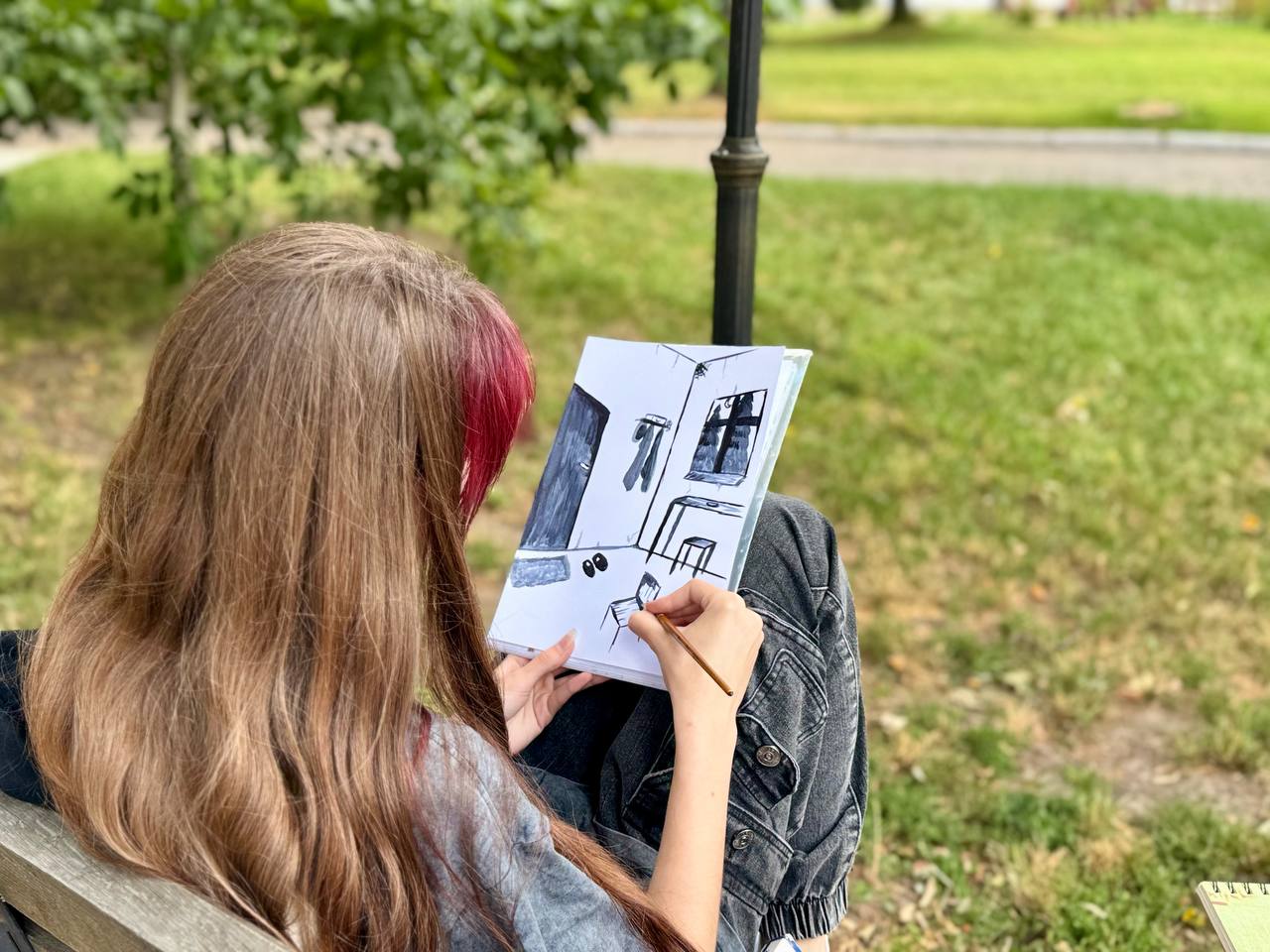
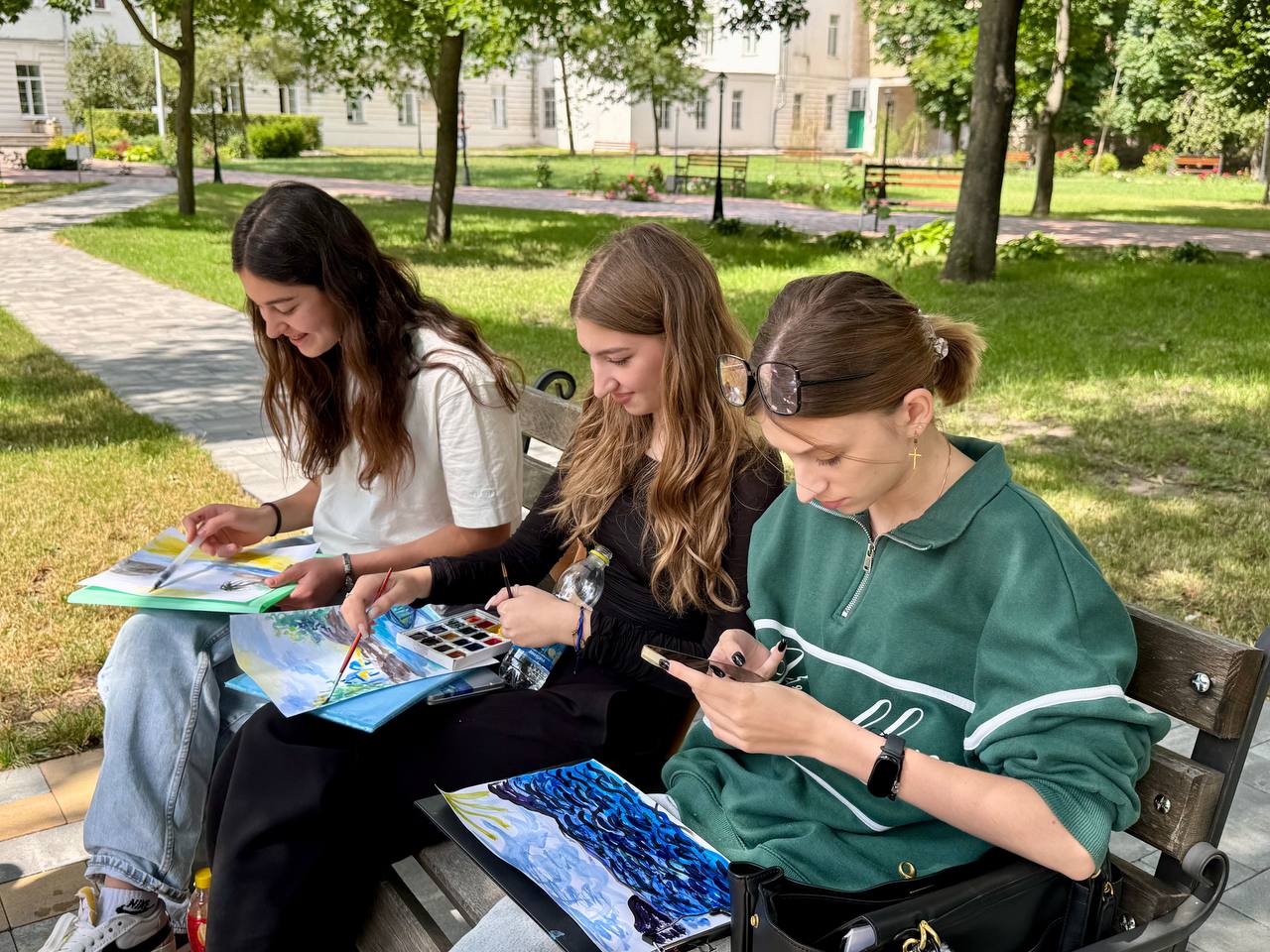
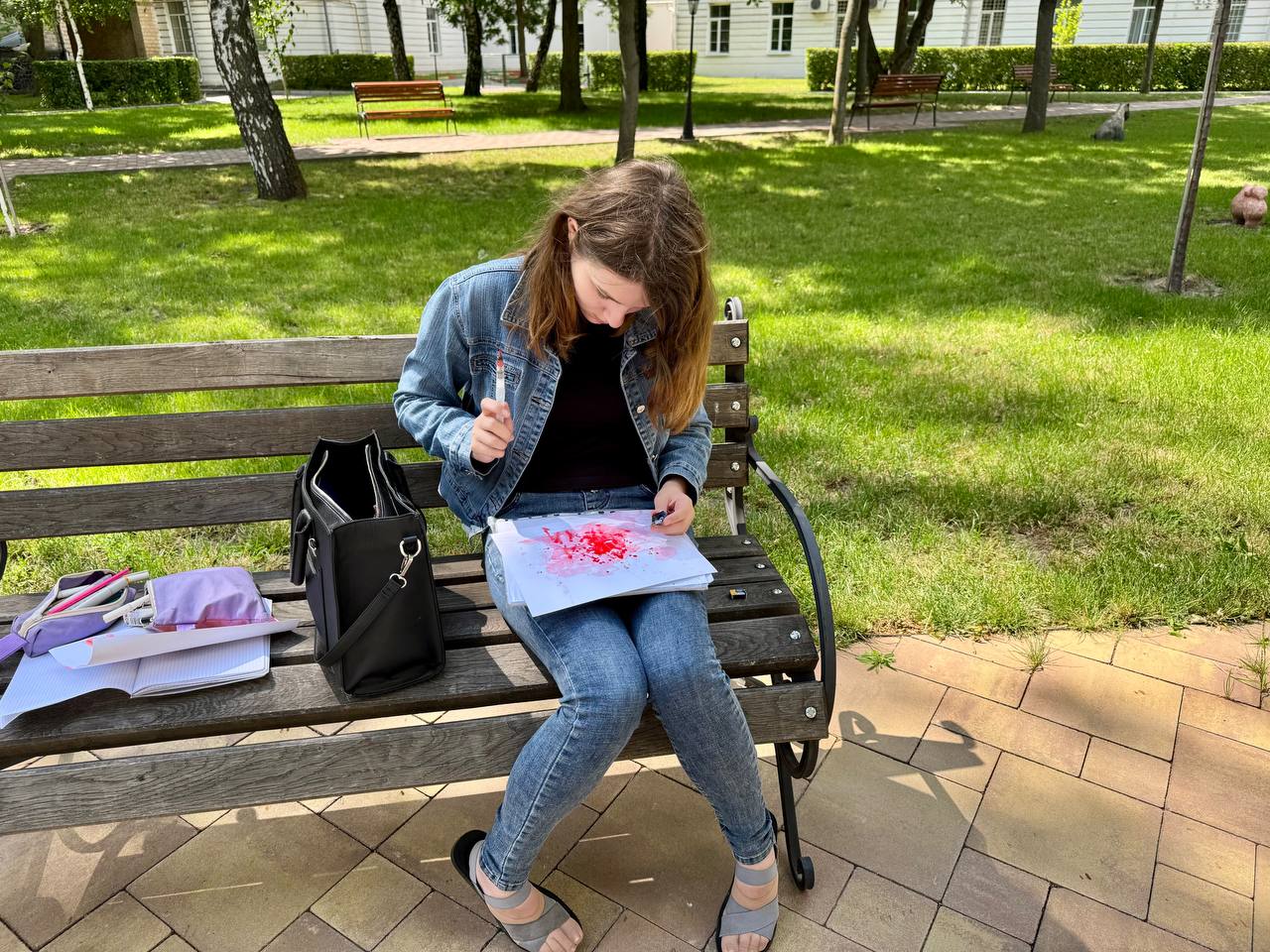
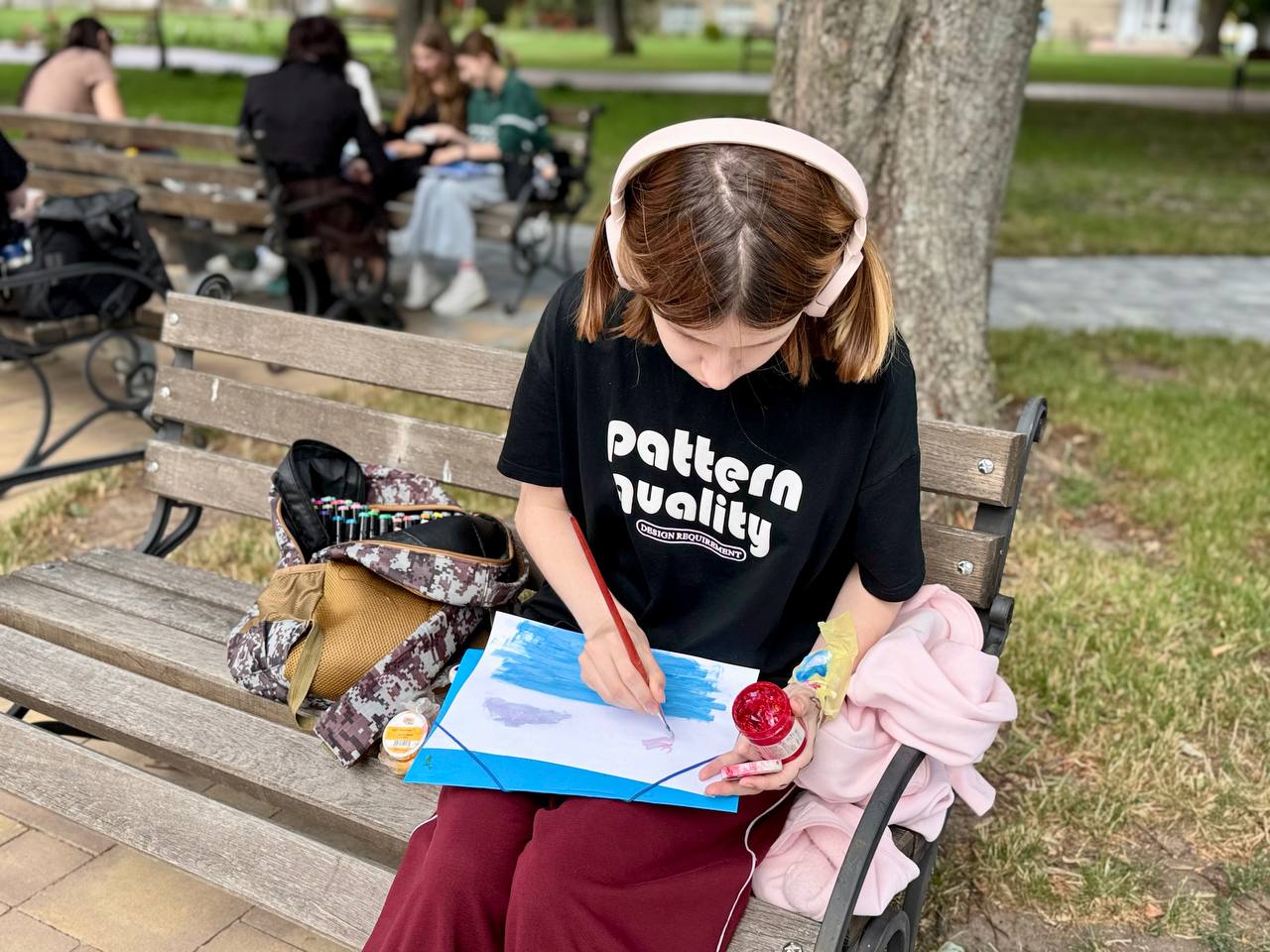
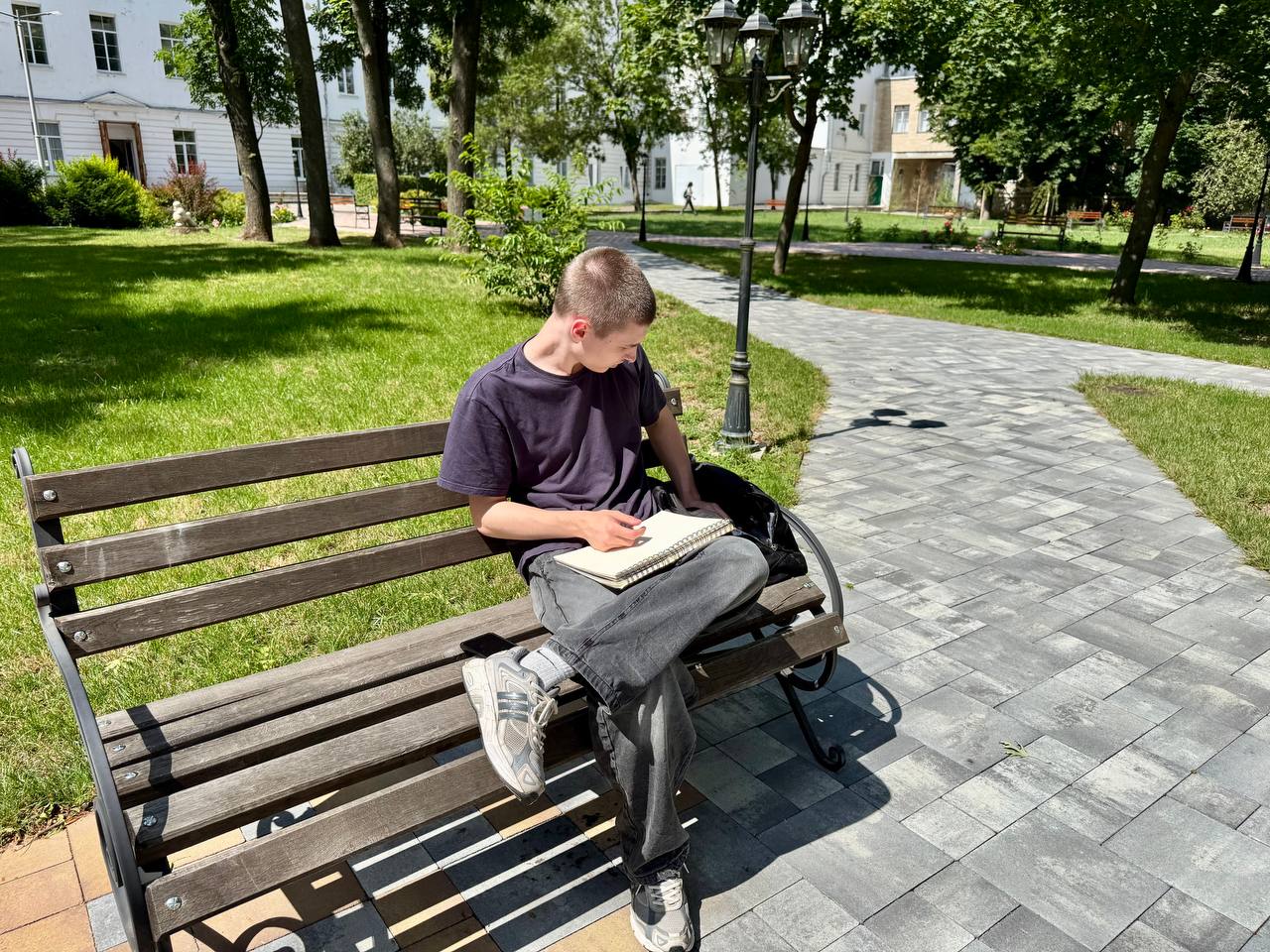
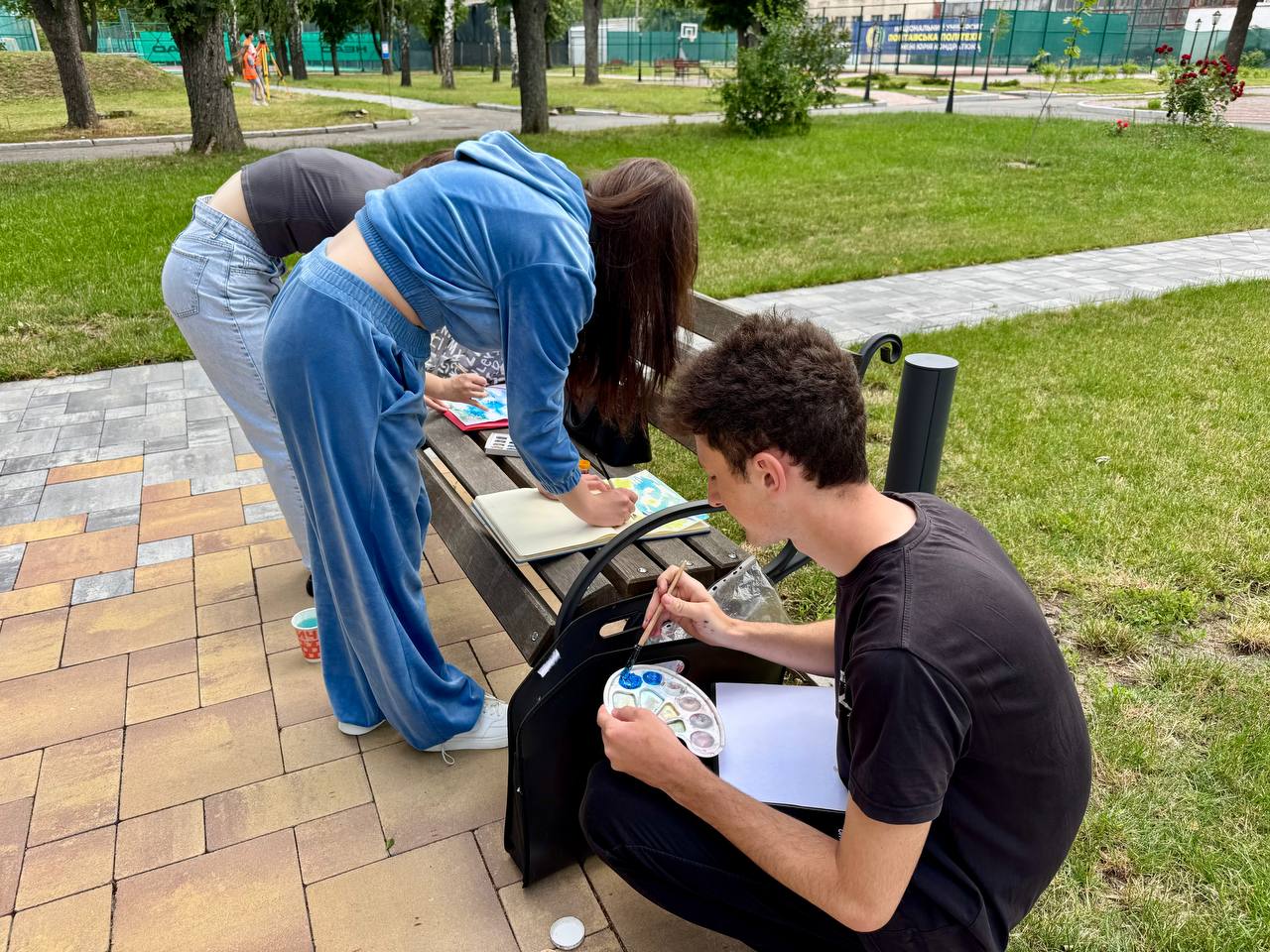
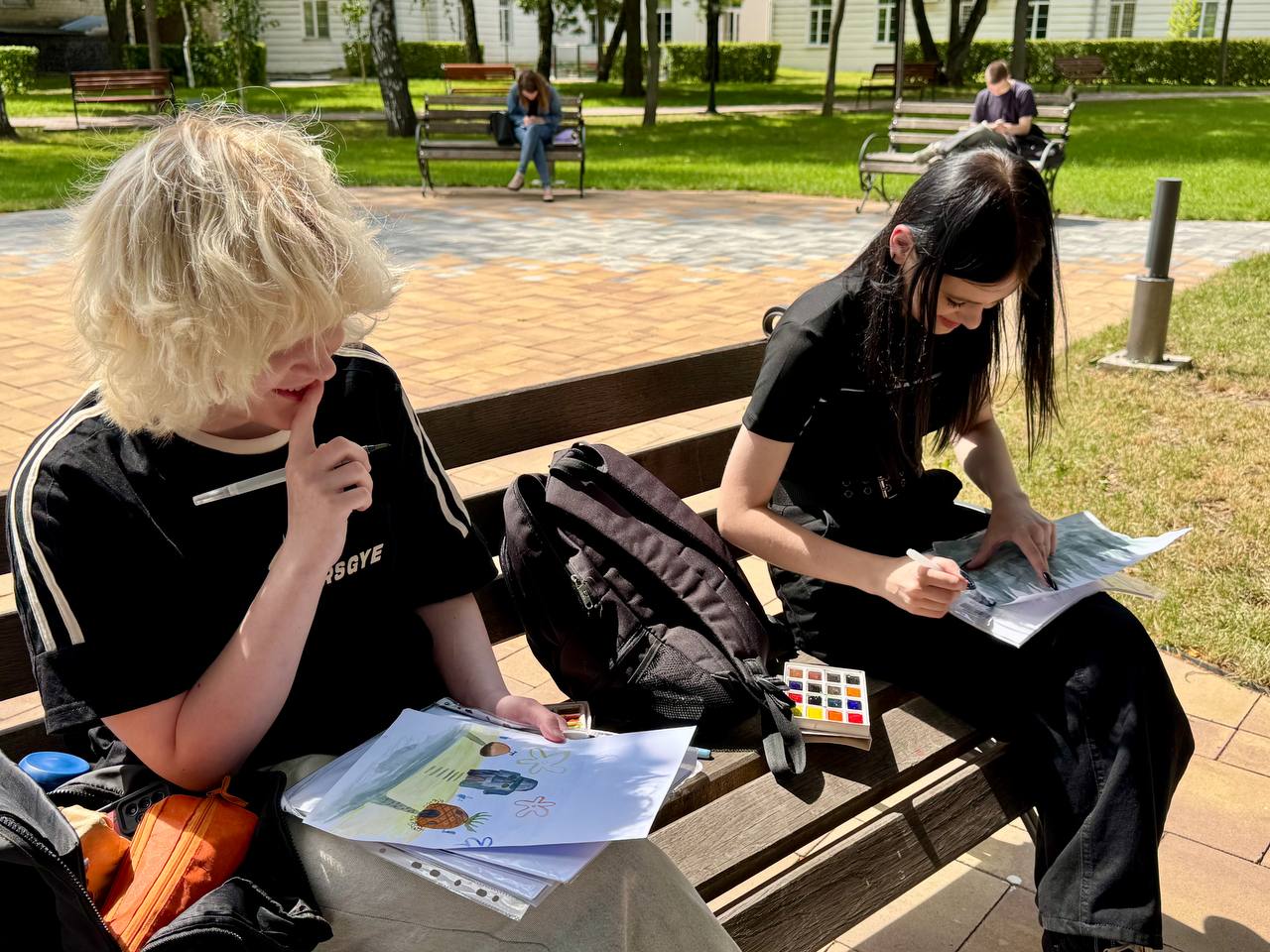
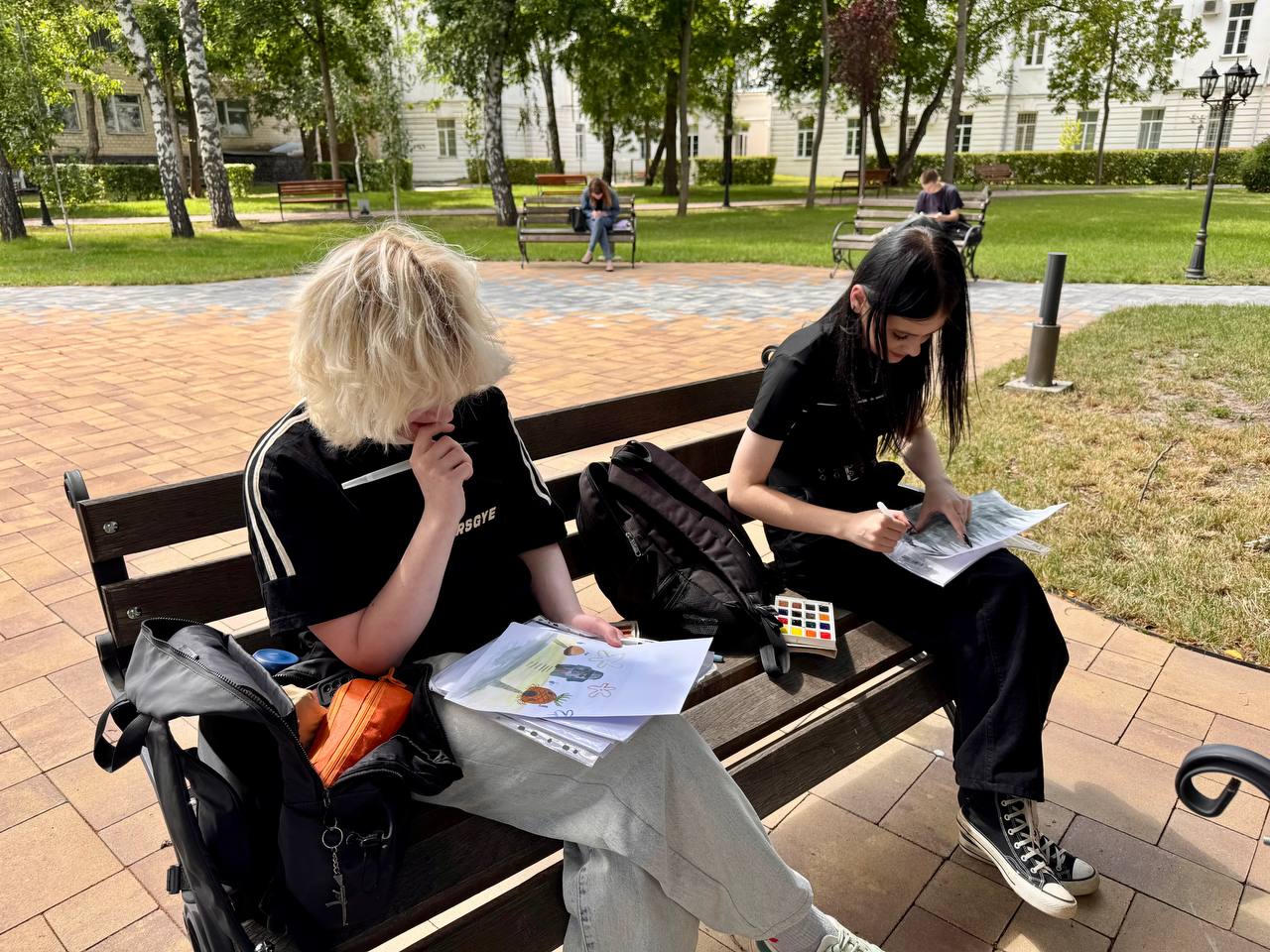
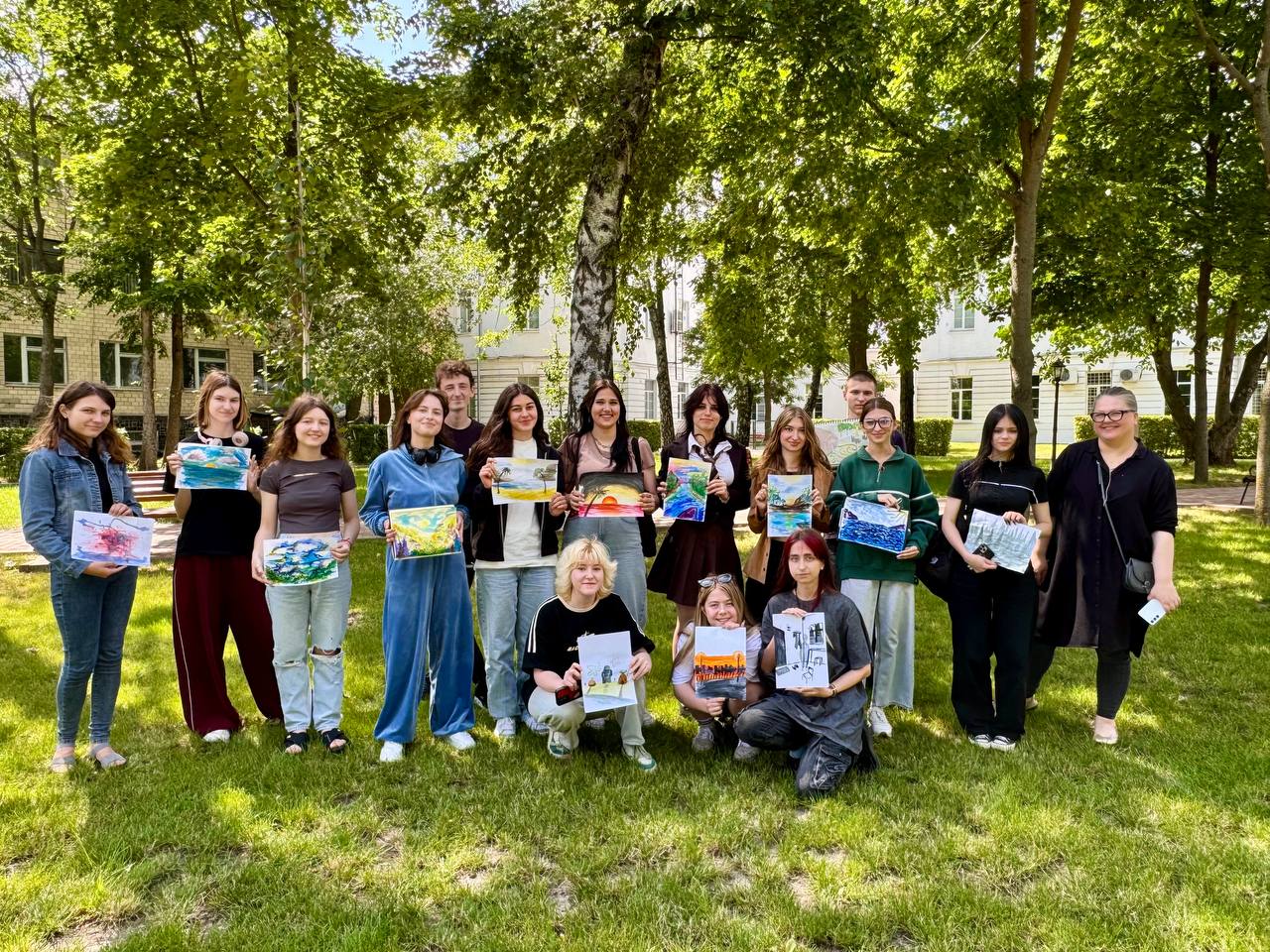
The session was moderated by Olena Ostrohliad, Senior Lecturer at the Department of Fine Arts, and Olena Kryvenko, Assistant at the Department of Psychology and Pedagogy, and practising psychologist at Poltava Polytechnic.
The event formed part of the international, large-scale EU-funded Erasmus+ KA220-ADU project “TRUST” – Trauma of refugees in Europe: An approach through art therapy as a solidarity program for Ukraine war victims (Grant No. 2024-BE01-KA220-ADU-000257527).
The project title is decoded as follows:
TRUST
T – Trauma
R – Refugees
U – Ukraine
S – Solidarity
T – Therapy
The project is co-funded by the EU and led by the Centre Neuro Psychiatrique St-Martin from Belgium, in partnership with the National University “Yuri Kondratyuk Poltava Polytechnic” (Ukraine), Greek Carers Network EPIONI (Greece), Fondazione Don Luigi Di Liegro (Italy), Lekama Foundation (Luxembourg), EuroPlural Project (Portugal).
Looking ahead, further art therapy events under the TRUST initiative will unveil new trauma-focused techniques and deepen self-help practices. After all, art is not only about beauty – it is about the power to live, even when life shifts. It is about the inner resource that sustains us when the ground seems to slip away beneath our feet.
Media Centre of
National University “Yuri Kondratyuk Poltava Polytechnic”
\



